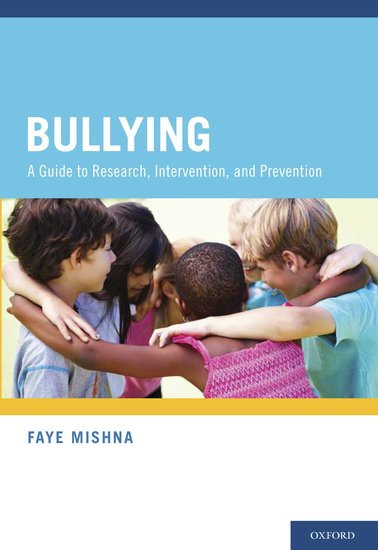In Bully, Emmy award-winning director Lee Hirsch invites viewers to spend a year in the lives of students and parents who deal with public torment and humiliation on a daily basis. By following the young victims from the classroom to their living rooms, viewers are given an intimate look into the effects that bullying has on these targets and their families. While parents and administrators scramble to find a solution to the problem, they must ask themselves: how do we differentiate bullying from conflict within friendships?
There seems to be an assumption that conflict within friendships is mutual and that the children are on equal footing. It is necessary albeit challenging, to differentiate bullying from conflict within friendship, including whether there is a power imbalance within the friendship.
Insults and demeaning comments are common among groups of friends and acquaintances, and are attributed to such factors as physical characteristics (e.g., weight or height), race, ethnicity, and religion. According to a study that entailed interviews with 145 Israeli students in sixth grade, a student’s reaction to such treatment by peers was based largely on the student’s appraisal of whether the comments or insults were meant “for fun” or “not for fun”. Comments interpreted to be “for fun” were viewed as not meant to harm, in contrast to the pain caused by comments considered serious or “not for fun” and as intended to hurt. Several indicators were identified as helping a student differentiate bullying/aggression from “fun,” such as whether the person belittling the student was a friend who smiled while making derogatory comments or when peers who witnessed the incident smiled. Nevertheless, the students described feeling hurt and humiliated.
In the study in which we examined bullying from the perspectives of fourth and fifth grade students who identified as victimized and of their parents and educators, the children and adults similarly commented on how common conflict was among groups of friends and acquaintances, and included derogatory comments and exclusion. As one teacher said, “one minute they are best friends and the next minute they’re excluding each other and talking behind each other’s back.” The issue of a power imbalance, integral to the definition of bullying, was particularly confusing when bullying occurred among friends. A number of the children struggled to determine whether their friend’s behaviors constituted bullying. Similar to the study cited previously, they used as a criterion their appraisal of whether the behavior or comment was meant “for fun.” For instance, after divulging that a child she considered a friend bullied her, a girl immediately added, “it was just one of those joking things.”
She elaborated that at times this other girl threatened to stop being her friend if she didn’t hand over her snack. This participant explained that although she typically complied with her friend’s demands, she thought that the girl “doesn’t really mean it” because the girl said “she was joking.” Another girl didn’t know what to make of how two of her friends treated her, for example repeatedly taking her lunch and school materials. Despite her distress, the girl tolerated the behavior. She revealed that after each incident she hoped it would cease and had not previously told anyone about this situation. She added that maybe her friends were “doing it for fun” because at other times they “talked nicely” with her. This pattern was clearly repetitive, however, and was not “fun” for the girl, who despite feeling “mad and sad” endured the behaviors. Neither her mother nor teacher was aware that this girl was bullied by peers, let alone by children she considered friends. The teacher was surprised to hear that the girl identified as bullied because she saw the girl as “a very content child.” Although another girl claimed that her friends did not bully her, she added that some of them excluded her at times and did not allow her to her play with them, which upset and “took me aback.” This girl’s mother and teacher also had no idea this girl identified as bullied. Her teacher described this girl as “well adjusted and a good student.”
Reported bullying underestimates the problem because many children do not disclose their victimization. In our study on bullying from the perspectives of the bullied children, their parents, and their educators, a key reason children gave for not telling an adult was related to being victimized by their friends (Mishna, 2004 ; Mishna & Alaggia, 2005 ). The children explained that they either did not want to get their friend into trouble or were afraid of losing the friend. These findings correspond with other research. In a study of middle school girls, although respondents characterized their best friends as behaving in ways they considered bullying, the girls remained friends. Findings of another study indicated that children in grades three and four were more likely to ask a teacher for help when they did not care about maintaining a friendship with the child who was the aggressor. These results indicate that the children were aware that a ramification of telling could be the end of a friendship.
Faye Mishna, PhD, is Professor and Dean at the Factor-Inwentash Faculty of Social Work at the University of Toronto, and is the author of Bullying: A Guide to Research, Intervention, and Prevention.
Subscribe to the OUPblog via email or RSS.
Subscribe to only psychology articles on the OUPblog via email or RSS.
View more about this book on the ![]()
![]()


Recent Comments
There are currently no comments.